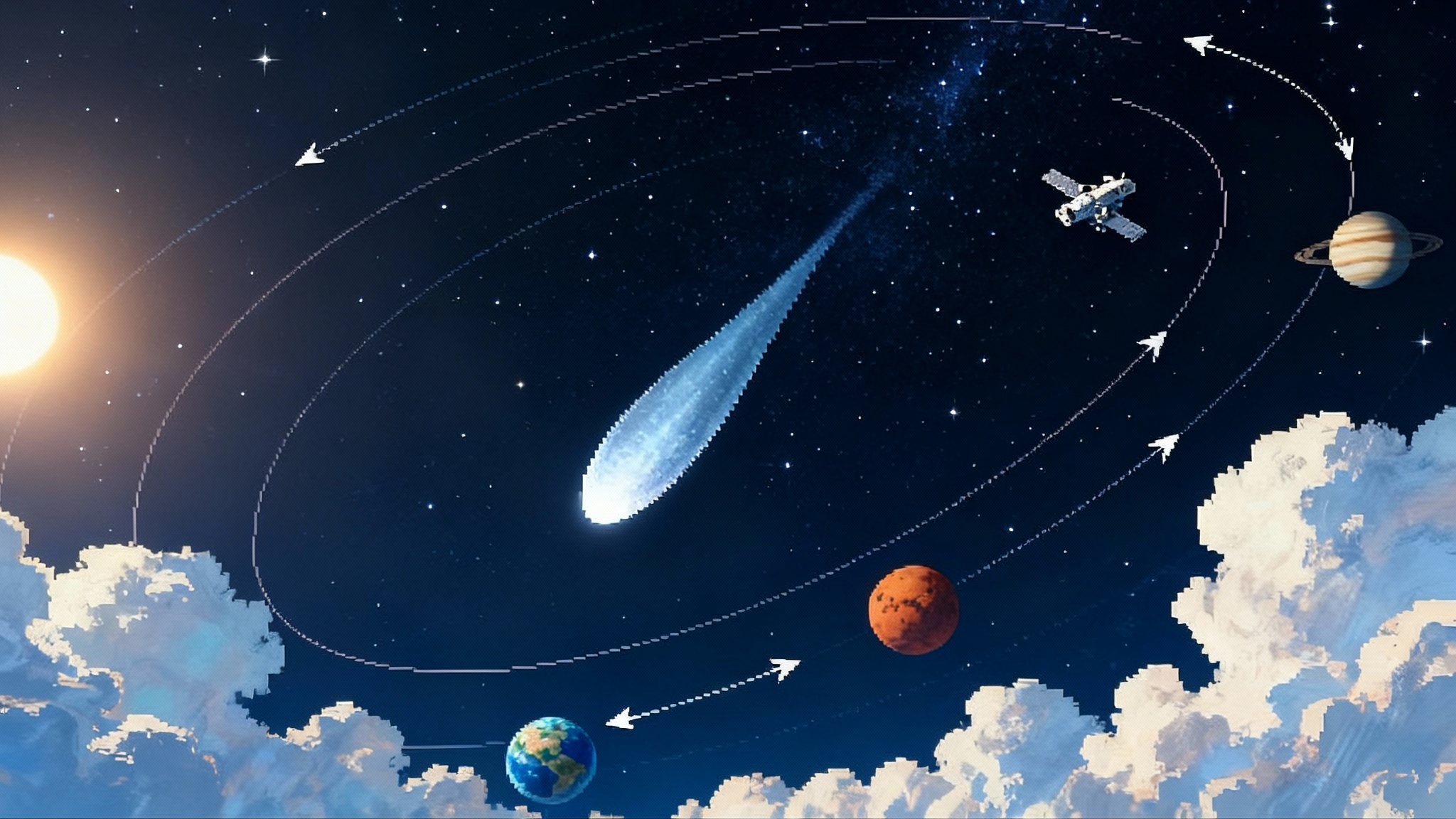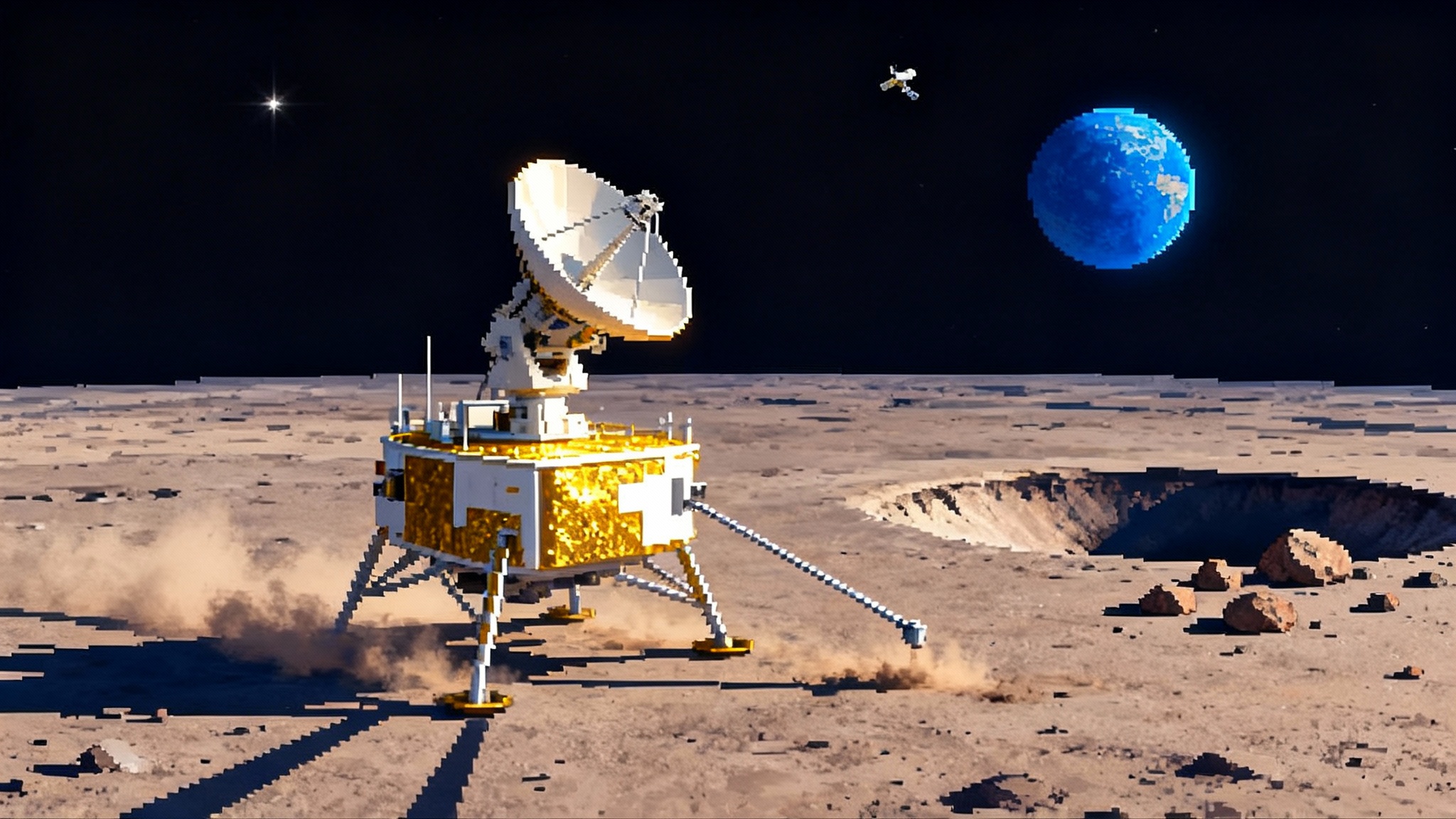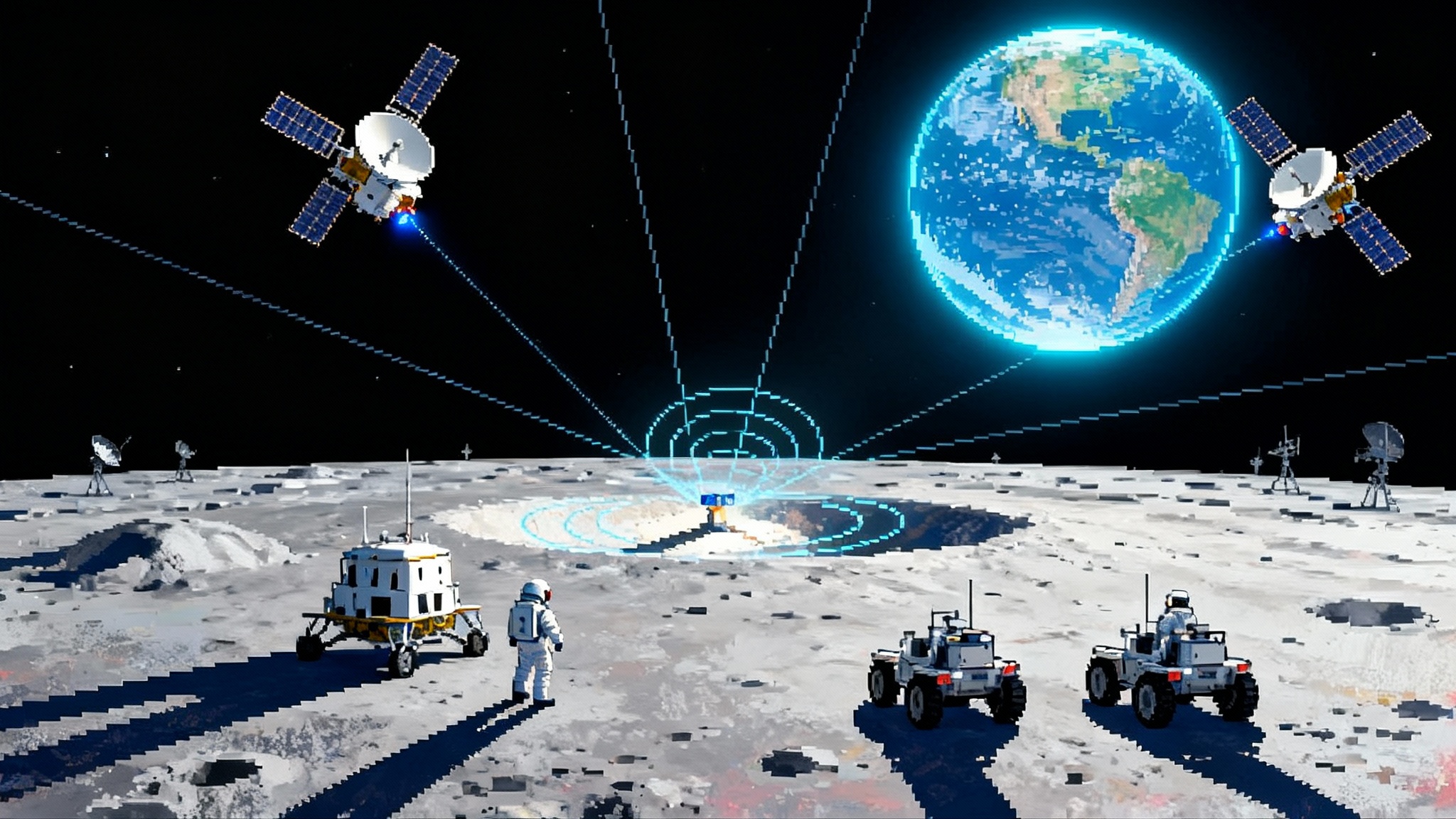Starship’s 2025 pivot: orbital refueling will decide the Moon
Two successful Starship flights in late 2025 set the stage. If SpaceX proves ship-to-ship propellant transfer in 2026, NASA timelines, Blue Origin’s plans, and science payload budgets all shift fast.

Breaking through the fall: why this season changed the odds
Spaceflight programs rarely hinge on a single moment. They hinge on sequences, where one clean data set enables the next risky step. This fall delivered exactly that for Starship. In late August 2025 SpaceX flew its tenth integrated test, deploying mock satellites and proving key upper-stage maneuvers before a controlled splashdown, a milestone documented by Reuters: 10th test flight on August 26, 2025. By mid October 2025 the eleventh flight repeated and extended those results, giving engineers what they crave most: repeatability.
These back-to-back successes do not land astronauts. They do something more important in the near term. They let SpaceX freeze certain variables. With ascent, separation, thermal protection, and controlled splashdowns moving from “maybe” to “probably,” the development spotlight can swing to the hardest unsolved piece of the Moon architecture: moving thousands of pounds of liquid oxygen and liquid methane between spacecraft in orbit without losing control of the vehicles or boiling away the propellant.
The simple picture: two thermoses and a quiet push
Imagine two giant thermoses floating side by side, each full of super-cold liquids. Now remove gravity. Nothing settles to the “bottom” unless you make a bottom. To pour, you first need to persuade the liquid to collect near an outlet. In space, that persuasion is called ullage. Small thrusters apply a gentle, continuous push so the fluid migrates and behaves like it has a down direction.
Once settled, transfer can happen through pumps or by using pressure differences. The donor tank is held at slightly higher pressure than the receiver, valves open, and the liquid flows. Sensors watch for bubbles and slosh, guidance software keeps both vehicles steady, and heaters, insulation, sun shields, and radiators manage heat so the cryogenic liquids stay cold enough to remain liquid.
If any part of that ballet slips even a little, bubbles can choke pumps, lines can freeze, or propellant can warm, expand, and vent. You either waste precious fuel or, worse, stress the tanks and structure. That is why this is the decisive test. Every landing mission downstream depends on this choreography working the same way every time.
What has already been proven
SpaceX and NASA ticked the first box in March 2024 by moving a large mass of liquid oxygen between internal tanks during a Starship coast phase. NASA confirmed the operation as part of its Cryogenic Fluid Management push tied to a 2020 technology award, noting that engineers are digesting data from that in-flight sequence. You can read the agency’s summary in NASA: tank transfer update on March 14, 2024.
That was tank-to-tank inside a single Starship. Useful. Not sufficient. The next step is ship-to-ship propellant transfer, with two Starships physically connected by docking hardware and plumbing, maintaining attitude while thousands of kilograms of fluid flow between them.
How ship-to-ship refueling actually works
Here is a clear mental model for the full operation:
-
Make a depot: Think of a Starship converted into a floating gas station. It carries extra insulation, a sun shade, and potentially cryocoolers. Its only job is to store propellant with minimal losses.
-
Fill the depot: A series of tanker Starships launch, rendezvous, and top up the depot. Each flight adds a fixed chunk of methane and oxygen. The sequence continues until the depot reaches the level needed to feed a lunar lander.
-
Dock and transfer: The lander vehicle approaches, matches attitude, and docks to the depot. Fluid couplings close, lines are purged, and ullage thrusters maintain a gentle acceleration so the liquids behave. Automated controls open valves and the transfer begins. Pressure, temperature, and flow sensors watch for bubbles and thermal transients. The system keeps the vehicles pointed so the sun warms nothing critical.
-
Thermally babysit the tanks: Boil-off is the silent enemy. Even a slow simmer bleeds away tons of propellant over days. Depots fight this with multi-layer insulation, sun-pointing attitudes that keep tanks in shadow, vapor-cooled shields that route cold vent gas around warm spots, and possibly active cryocoolers to re-liquefy a fraction of warmed vapor.
-
Depart for the Moon: Once filled, the lunar Starship departs the depot for translunar injection. The depot remains on station to support the next mission.
None of these steps are exotic by themselves. Doing them all at once, at scale, and reliably is the challenge.
Why 2026 is the line in the regolith
Artemis depends on a lunar lander that can leave Earth orbit full, descend to the Moon, and come back for rendezvous. Starship can only do that if it is refueled in orbit. For NASA’s current schedule, the 2026 ship-to-ship transfer demonstration is the make-or-break milestone for an astronaut landing later in the decade. If SpaceX nails the demo early in 2026 and repeats it, the timeline can hold. If the demo slips, crewed lunar surface dates move right with it, regardless of how healthy the rest of the system looks.
From a programmatic standpoint, 2026 is about risk retirement. A convincing demonstration removes the single biggest technical uncertainty in the human landing architecture. It turns the remaining work into integration and operations problems that scale with flight rate and manufacturing, not breakthroughs.
The mechanics in plain terms
Consider three concrete engineering hurdles and how teams plan to handle them:
-
Settling and slosh: In microgravity, liquid is a mischievous cat. It wants to hide along the walls and form blobs. Ullage thrusters apply a constant, tiny push so the liquid collects near the outlet like water tilting in a glass. Engineers tune thrust levels to avoid stirring the fluid while preventing bubbles from entering pumps.
-
Thermal control during long loiter: Oxygen and methane want to warm up. Depots are oriented so tanks live in shade, with radiators pointed at cold space. Some designs put a reflective shield on a boom to keep the Sun off. Vapor from controlled venting can be routed to cool the shield. Active cryocoolers add margin but cost power.
-
Docking, hold, and transfer: Two big stainless steel vehicles must behave like one rigid machine. The docking system must tolerate tiny misalignments, absorb forces as valves open and close, and keep propellant lines tight against leaks. Guidance software dampens any oscillation during transfer so you do not excite slosh.
Each of these problems has heritage in smaller systems. What does not have heritage is solving them all together at Starship scale.
A new lander race is good for timelines and budgets
Competition sharpened the picture in 2025. SpaceX is building the Human Landing System variant of Starship for Artemis, and Blue Origin is assembling its hydrolox Blue Moon Mark 2 lander for a follow-on mission. Both architectures rely on cryogenic storage and some form of refueling or topping off. That means two independent paths to flight-proven orbital propellant logistics. This shift echoes the lunar delivery momentum we covered in CLPS turns the corner and dovetails with the navigation build-out in Moonlight and LunaNet plans.
If one provider demonstrates transfer first, the other has a template to match. If both succeed, NASA gains redundancy. The practical effect is faster schedule convergence and price pressure in favor of payload builders.
For science missions, the kicker is capacity. Once depots exist and tanker costs are amortized over many flights, every kilogram to lunar orbit or a deep-space trajectory gets cheaper. That means more instruments per mission or more missions for the same budget.
What it unlocks beyond the Moon
Reliable on-orbit refueling changes mission design the way containerization changed shipping. It lets you:
-
Launch dry: Send a heavy spacecraft up mostly empty and fill it where it lives. That avoids fighting Earth’s atmosphere with every drop.
-
Use smaller transfer stages: A depot-fed tug can make multiple trips from low Earth orbit to lunar orbit, carrying cargo like a ferry.
-
Stage Mars hardware: Park a cargo Starship or long-duration stage at a high-energy orbit and top it off over weeks. Spread risk across many launches instead of betting the mission on a single heavy lift. For a look at how new vehicles are expanding options, see New Glenn’s Mars shot.
-
Build lunar logistics that scale: With liquid deliveries on tap, a south-pole base can get power systems, surface rovers, and pressurized labs in larger, cheaper batches.
Risks to watch, with concrete triggers
-
Boil-off budget: If early depot tests show more than a few tenths of a percent loss per day, tanker counts balloon. The mitigation is better sun shields, polished operations to shorten loiter times, and possibly active cooling. Watch for data on depot thermal performance after multi-day loiters.
-
Docking stability: If coupled vehicles ring like a bell during transfer, slosh can get ugly. The fix is software. Expect a guidance update cycle that dampens oscillations with gentle, timed thruster pulses. The telltale sign of progress will be publicized run times of steady-state transfers without aborts.
-
Ground cadence vs. pad wear: Refueling campaigns need several launches in short succession. If the pad or the launch tower needs long repairs between flights, the campaign stretches. A second pad is the obvious relief valve. Track construction and commissioning milestones for additional launch infrastructure.
-
Supply-chain realism: A depot is only as ready as its valves, seals, insulation, and cryocoolers. If any vendor slips, the demo slips. Teams can dual-source critical items and stock spares. Procurement bulletins and photos of hardware staging will be the early indicators.
How to visualize the depot, clearly
Picture a silver cylinder the size of a small office building, flying tail-first with a square of shadow cast by a rectangular sun shade. On its night side, radiators glow faintly blue in thermal cameras. The Moon is a sharp crescent. A tanker approaches slowly along an illuminated corridor, guided by lidars and cameras. When the two touch, spring-damped latches capture, then firm up. The vehicles become one. Small thrusters whisper. Liquid oxygen flows like a silent river inside polished pipes you will never see.
The near-term to-do list for 2026
-
A repeatable ship-to-ship transfer with measured mass moved, temperatures logged, and zero leaks.
-
A multi-day depot loiter showing boil-off within budget, ideally with a warm pass through orbital daylight to stress the system.
-
A closeout test that simulates a full campaign: two or three tankers in quick succession, a top-off, then an orbital plane-change or energy-adding burn by the receiver to show it can depart for the Moon as planned.
Deliver these, and Artemis gains a solid spine.
What this means for different players
-
Payload builders: Start scoping payloads that assume depot-fed rides. Ask for firm quotes on delivery to near-rectilinear halo orbit or low lunar orbit using a tug. Design for modular loading so you can split mass across consecutive tankers if needed.
-
Science teams: Draft proposals that exploit higher mass and power budgets. Larger seismometer networks, bigger drill rigs, or pressurized rovers become feasible when you are not paying a premium for every kilogram.
-
Insurers and financiers: Define coverage for depot-serviced missions. Underwrite partial campaigns with milestones tied to transfer success metrics. Price in a contingency for additional tanker flights if boil-off runs hot.
-
Policy makers: Push for interoperable docking and fluid couplings where possible. A common interface across providers turns competition into resilience. Consider funding a small, neutral test article to validate cross-compatibility in orbit.
The competitive landscape will accelerate everything
Spaceflight competition is not a press-release sport. It is an engineering ratchet. Each rung one company climbs becomes the baseline for the other. With both Starship HLS and Blue Moon progressing, the ratchet is engaged.
Expect transfer demonstrations to cluster. Expect one provider’s operations trick to show up in the other’s next flight. Expect tanker economics to improve as flight hours pile up and refurbishment gets simpler. Those dynamics compress schedules and squeeze costs, and science rides the wave.
The bottom line
This fall’s flights mattered because they turned Starship from a question mark into a platform with predictable behavior. That platform is now set up to attack the hardest problem left: moving cryogenic propellant between ships in orbit at scale. When a clean 2026 transfer demo lands, the Moon stops being a calendar debate and becomes a logistics exercise. When that happens, timelines accelerate and budgets stretch farther. We will know we crossed the line when refueling in orbit feels boring. That is when the real exploration begins.








